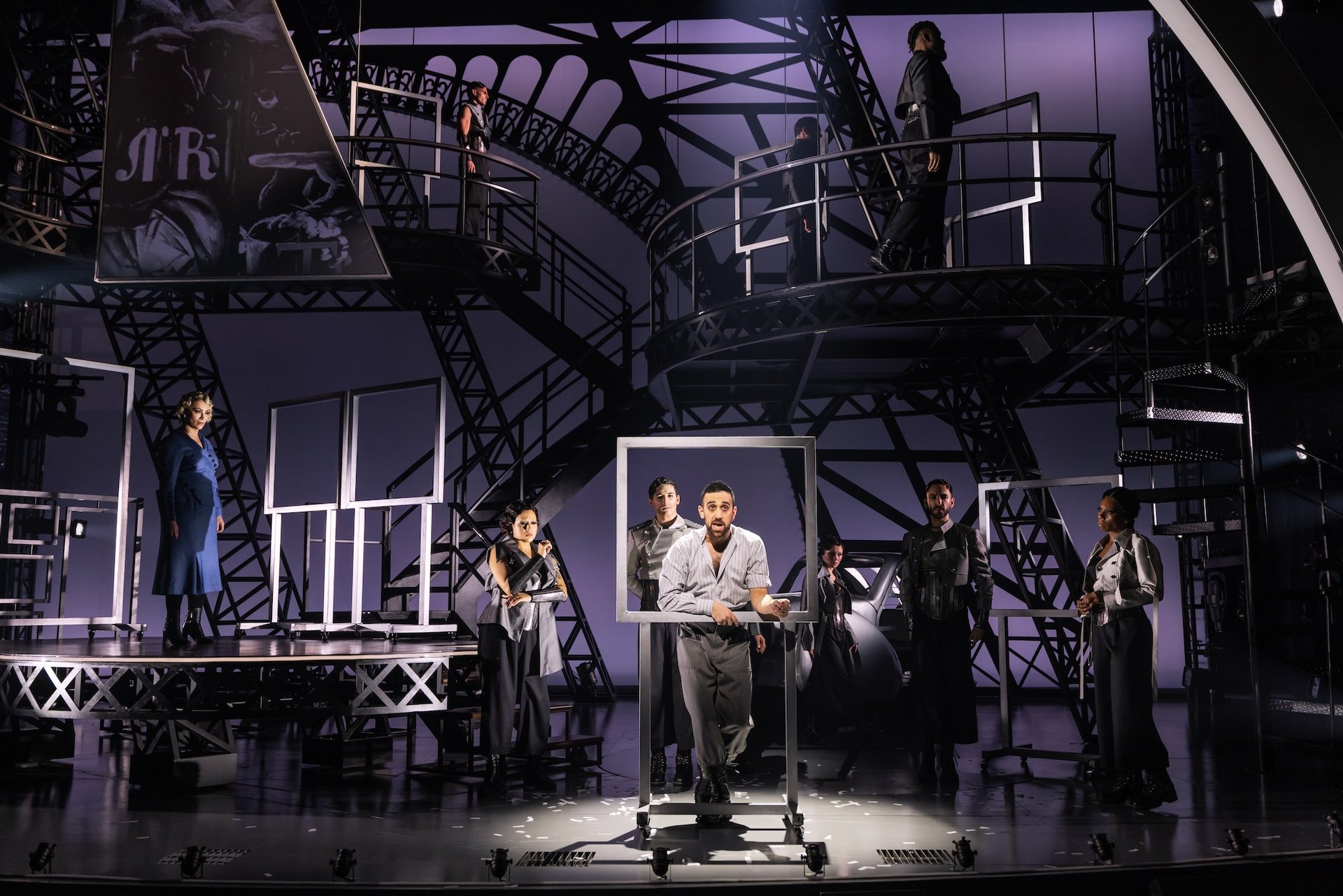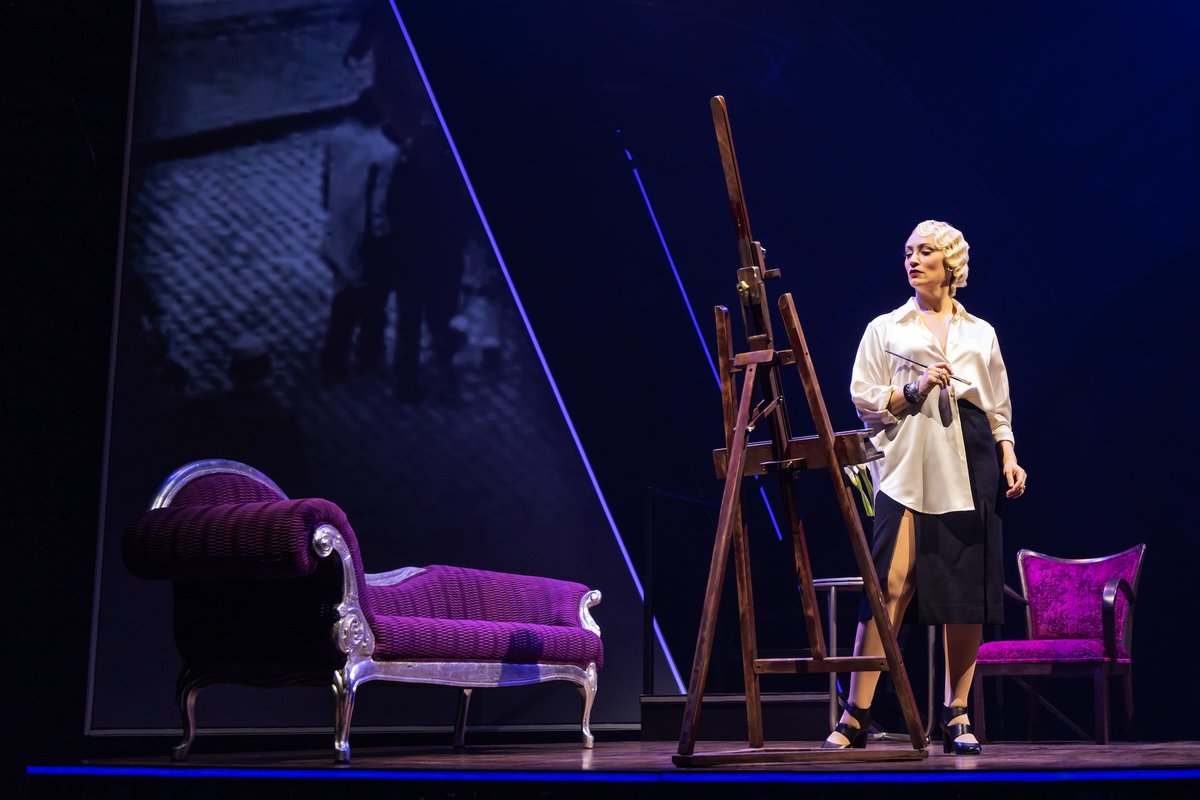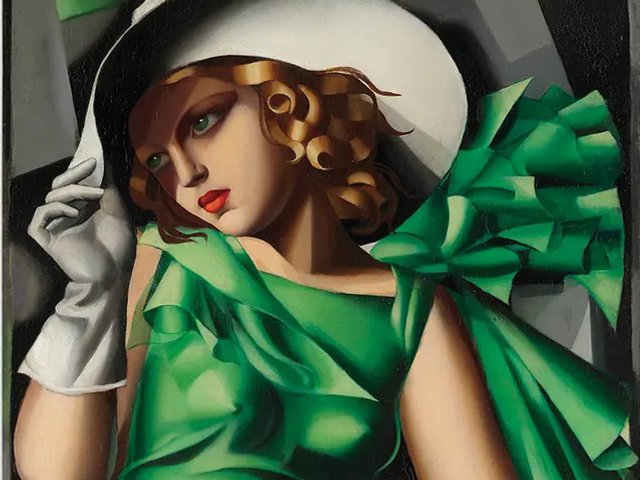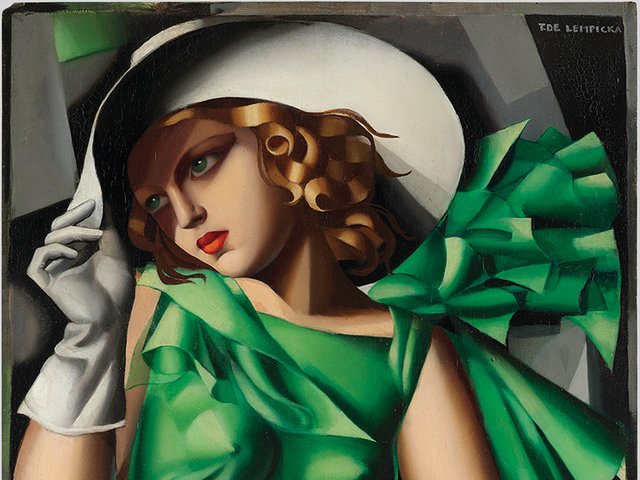Broadway loves an extravagant woman, so it was only a matter of time before the Art Deco painter Tamara de Lempicka (1898-1980) got her own Evita-style musical. Lempicka, which opened on 14 April at the Longacre Theatre, focuses on the artist’s most fruitful period in the 1920s and 30s—when she lived in Paris making (and successfully selling) portraits and nudes of her friends, family, lovers and local aristocrats in her signature “soft Cubist” style.
Directed by Rachel Chavkin (of Hadestown fame) and starring Eden Espinosa (known for her belting performances as the main character in Wicked), Lempicka echoes the lavishness of its protagonist—who added “de” in front of her Polish name to denote her status in France after fleeing the Bolsheviks in 1917 and was notorious for her fashionable clothing, opulent parties and numerous love affairs with both men and women. As much inspired by the aesthetics of the artist as by those she would later influence—most notably Madonna, a prominent collector of Lempicka’s work who featured her art in her Vogue music video—the musical focuses on Lempicka’s (at times fictionalised) life as a bisexual artist much more than on the work that made her famous. In fact, although numerous songs and plot points revolve around her painting, and art-historical trends more generally, her prop easels remain empty throughout the show in a somewhat awkward visualisation of the oft-repeated tagline, “Never let them see your brushstrokes.”
The playwright Carson Kreitzer likes to tell the story of how she first came across Lempicka’s work in a Taschen monograph while browsing a bookstore in Chicago more than a dozen years ago. Kreitzer says she was instantly mesmerised by this “woman of incredible vision and appetite” and inspired by the fact that Lempicka, like Kreitzer, was bisexual. The playwright approached the composer Matt Gould to write a musical with her about the artist, which debuted in 2018 in Massachusetts and toured to San Diego in 2022.

George Abud as Filippo Tommaso Marinetti in Lempicka Photo: Matthew Murphy and Evan Zimmerman
While Lempicka takes certain liberties with the artist’s biography for dramatic effect—for example, using her lover Rafaela Fano (Amber Iman) as a stand-in for all of her various affairs—Lempicka is painted as the imperfect person she really was, who liked to keep her age a mystery and seemed to dislike being a mother, although she did make portraits of her long-suffering daughter, Kizette de Lempicka-Foxhall (Zoe Glick).
In one of the show’s stranger choices, Filippo Tommaso Marinetti (George Abud), the poet and founder of Futurism, is portrayed as Lempicka’s art teacher—but he does deliver Lempicka’s most memorable number, the Madonna-inspired Perfection, idolising the machine age. Later, Marinetti becomes the antagonist stand-in for fascism as the Second World War approaches and Lempicka is again forced to flee—this time to the US. As a confusing surrogate for the Vichy regime, Marinetti leads a fascist group that shuts down the bar run by another historical secondary character, the lesbian cabaret performer and infamous bar owner Suzy Solidor (Natalie Joy Johnson)—the “most painted woman in the world”, posing for Lempicka as well as for Pablo Picasso, Georges Braque, Francis Picabia and others—who herself in real life not only catered to the fascists at her popular La Vie Parisienne nightclub but was even convicted for her connections to Vichy after the war. In Lempicka, Solidor is flattened into the role of a queer victim of fascism.
An over-the-top historical tidbit that remains unchanged in Lempicka is that when she died, the artist requested her daughter hire a helicopter and scatter her ashes into a volcano. Lempicka lived and died in glamourous decadence, and as Julian Dawes, the head of Impressionist and modern art at Sotheby’s, points out, the market has recently turned to favour her aesthetic. A concurrent selling exhibition, The World of Tamara: A Celebration of Lempicka & Art Deco, is on view at the auction house’s New York headquarters (until 18 April).

Tamara de Lempicka's Nu aux buildings (1930) Courtesy Sotheby's
“It’s beyond serendipitous that we got access to a few extraordinary paintings,” Dawes says of the seven oils featured in The World of Tamara, alongside Art Deco jewellery by Cartier and Van Cleef & Arpels and works by Le Corbusier, Edward Steichen and André Lhote (Lempicka’s actual art teacher). Dawes says the most significant of Lempicka’s seven paintings in the show, the $25m Nu aux buildings (Nude with buildings, 1930), is “a quintessential Art Deco painting with a metropolis in the background inspired by New York City and the Chrysler Building and Empire State Building, which had just been completed”.
“Art Deco is making a massive resurgence,” Dawes adds, pointing to recent trends in hotel and restaurant décor. “The principles that defined Art Deco are back, and it’s 100% a response to the previously popular minimalism. It’s an absolutely pendular shift.” He sees this as running in tandem with the move from abstraction towards figuration in contemporary art, as epitomised by the popularity of artists like Anna Weyant. Lempicka the musical also arguably falls into this trend of maximalism—a show as much of our current time as of its 100-year-old setting.
- Lempicka is at the Longacre Theatre in New York until 19 May. The World of Tamara: A Celebration of Lempicka & Art Deco is at Sotheby's in New York until 18 April




